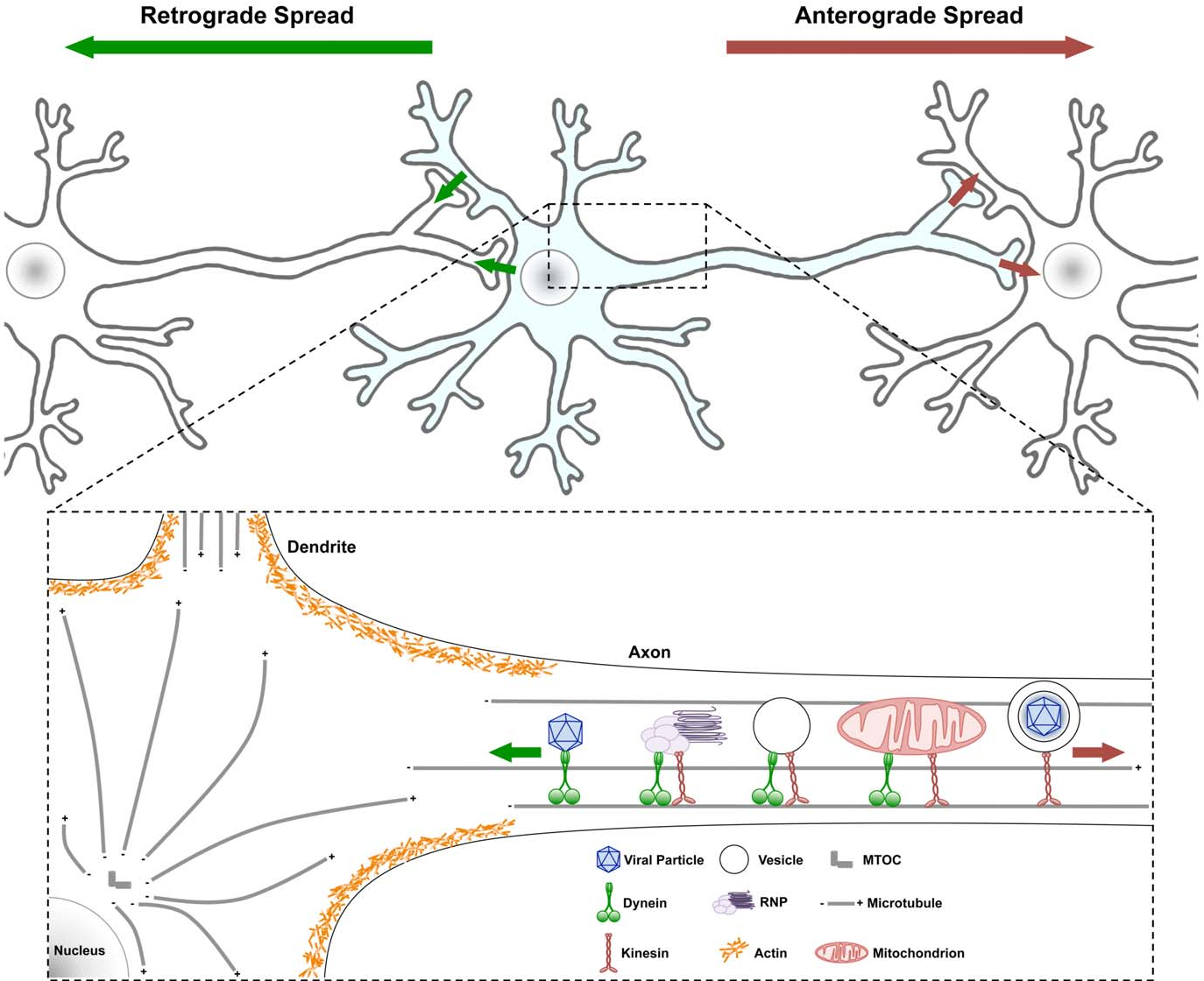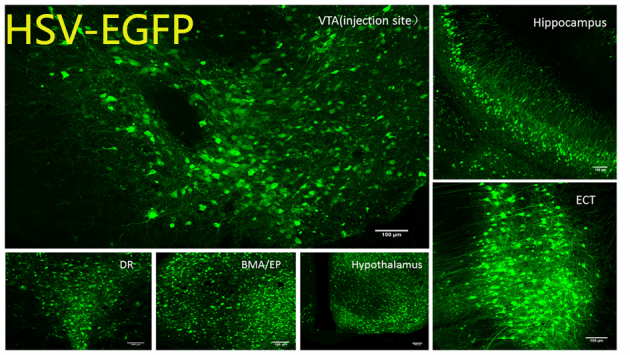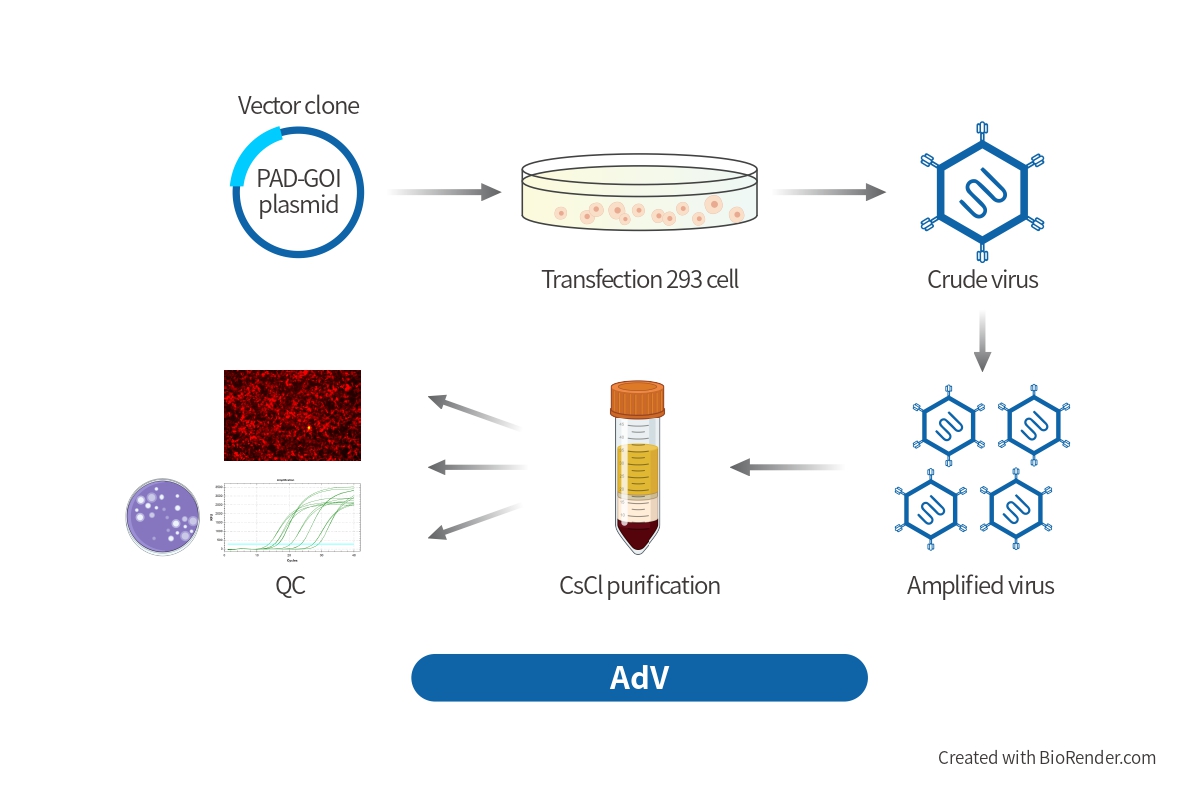
Fig1. Traffic patterns in axons of viral infected neurons.
Thymidine nucleotide kinase (TK) is an essential component for HSV replication after infection of nerve cells. In the presence of TK, HSV can replicate and express the target gene in the cell, and its progeny virus will transport to the synapse, and then crosses the synapse into the downstream neuron, so as to realize multisynaptic tracing. When removed TK (TK-deleted), HSV-ΔTK can infect neurons, but can't replicate. We know that only viruses that can replicate have the ability to cross synapses, so HSV-ΔTK can’t cross the synapses. However, if we provide AAV virus as a helper to express TK protein fist, the HSV-ΔTK can realize anterograde monosynaptic tracing.
Applications
● Multisynaptic tracing from the brain center to peripheral, or the lower to the higher brain region.
● Tracking peripheral organs' connections to the central nervous system
● Tracking the neural networks in disease or injury model.
● Changes in neural networks during neural development.

Fig2. Mice were infected with HSV
| Cat# | Name | Description | Price |
|---|---|---|---|
| H01001 | HSV-EGFP | Anterograde, multisynaptic | Inquiry |
| H01002 | HSV-tdTomato | Anterograde, multisynaptic | Inquiry |
| H02003 | HSV-LSL-tdtomato-2a-TK(H356) | Cre dependent, Anterograde, multisynaptic | Inquiry |
| H03001 | HSV-ΔTK-hUbC-tdTomato | Combined with AAV-TK, anterograde monosynaptic | Inquiry |
| H03002 | HSV-ΔTK-LSL-tdTomato(H361) | Cre dependent, Combined with AAV-TK, anterograde monosynaptic | Inquiry |
References
- Bowers W J, Mastrangelo M A, Stanley H A, et al. HSV amplicon-mediated Abeta vaccination in Tg2576 mice: differential antigen-specific immune responses[J]. Neurobiol Aging, 2005, 26(4):393-407.
- Frazer M E, Hyghes J E, Mas trangelo M A, et al. Reduced pathology and improved behavioral performance in Alzheimer’s disease mice vaccinated with HSV amplicons expressing amyloid-beta and interleukin-4[J]. Mol Ther, 2008, 16(5):845-853.
- Coen, D.M., Kosz-Vnenchak, M., Jacobson, J.G., Leib, D.A., Bogard, C.L., Schaffer, P.A., Tyler, K.L., and Knipe, D.M. (1989). Thymidine kinase-negative herpes simplex virus mutants establish latency in mouse trigeminal ganglia but do not reactivate. Proceedings of the National Academy of Sciences of the United States of America 86, 4736-4740.
- Li, X., Chen, W., Pan, K., Li, H., Pang, P., Guo, Y., Shu, S., Cai, Y., Pei, L., Liu, D., et al. (2018). Serotonin receptor 2c-expressing cells in the ventral CA1 control attention via innervation of the Edinger-Westphal nucleus. Nature neuroscience 21, 1239-1250.







